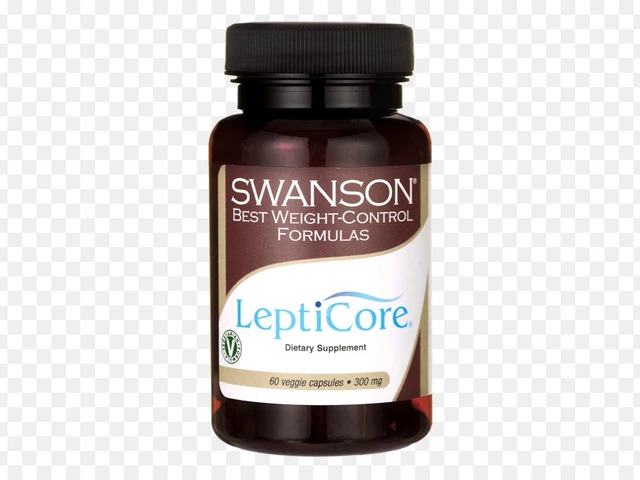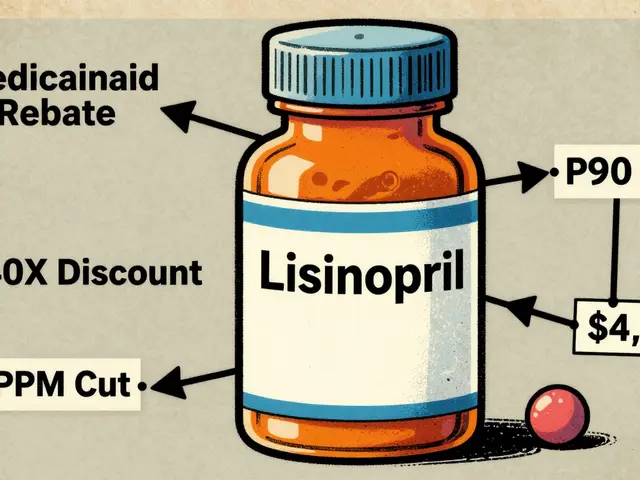Exploring Lasix Alternatives: Effective Diuretics and Medications for Edema and Hypertension
When managing conditions like edema and hypertension, Lasix is a commonly prescribed diuretic. However, several alternatives may offer better outcomes or more suitable treatment options depending on individual health needs. Exploring alternatives like Torsemide, Bumetanide, and Chlorthalidone can provide insights into how different diuretics work to reduce fluid retention and manage blood pressure effectively.
Each of these medications carries its own benefits and potential downsides, requiring careful consideration alongside medical guidance. This article delves into these alternatives, discussing their mechanisms, utilization, and the potential for improved clinical results. Whether you're dealing with heart failure or looking for a hypertension solution, understanding these options is crucial for making informed health decisions. Let's embark on a detailed comparison to unveil which could be the best Lasix alternative for you.
Torsemide
Torsemide, marketed under the brand name Demadex, represents a robust contender in the realm of loop diuretics, often utilized as an alternative to the well-known Lasix. It carves a niche for itself by not only managing edema stemming from conditions like congestive heart failure, liver cirrhosis, and renal disease but also by wielding effectiveness in tackling hypertension. By inhibiting the reabsorption of sodium and chloride in the kidneys, it facilitates rapid excretion of these salts, along with water. This mechanism positions Torsemide as a powerful ally in the battle against fluid retention.
One of the aspects that make Torsemide particularly appealing is its high bioavailability. Studies have demonstrated that about 80% of a dose becomes accessible to the body when taken orally. This significant feature is coupled with the fact that Torsemide may offer lower hospitalization rates and improved clinical outcomes, particularly for those grappling with congestive heart failure. It's not uncommon to see this medication chosen over Lasix when a slight edge in the effectiveness is anticipated. However, it doesn't mean the journey is without potential hurdles, such as excessive urination or the requirement for regular monitoring due to possible drug interactions.
Delving deeper into the therapeutic prowess of Torsemide, its applicability extends beyond edema management. Notably, its capacity to maintain stable cardiovascular parameters while dealing with intricate heart conditions underlines its versatility. The confidence in prescribing it is often backed by reputable studies and practices. A quote from the American Heart Association elucidates,
"Loop diuretics like Torsemide are pivotal in the management of heart failure patients, offering the distinct advantage of potent diuretic effects necessary for improved clinical outcomes."
Despite its promise, maintaining vigilance is crucial. Proper monitoring of electrolytes and renal function remains essential in patients on Torsemide. This ensures the balancing act against potential side effects like headaches or dizziness does not overshadow its advantages. Thus, Torsemide aligns itself as a hard-hitting alternative to Lasix, especially suited to those who might need that extra dose of efficacy to curb their fluid retention issues effectively.
Bumetanide (Bumex)
Bumetanide, often found under the brand name Bumex, is a valuable player in the world of Lasix alternatives, specifically for those dealing with edema and hypertension. Known for its potency and efficiency, Bumetanide is part of the loop diuretic family, working in a manner similar to Lasix by swiftly flushing out excess fluid from the body. This medication is available as both an oral tablet and an injectable solution, offering flexible administration options tailored to patient needs. Patients who have found Lasix less effective often turn to Bumetanide for its robust diuretic action.
Bumetanide is described as "a diuretic belonging to the class of drugs known as loop diuretics" by MedlinePlus.
When moving forward with Bumetanide treatment, it's crucial for individuals to consider its mechanism of action. It works by blocking the reabsorption of sodium and chloride in the kidneys, facilitating the elimination of water, sodium, and chloride. This translates to rapid relief from fluid overload, a symptom prevalent in conditions like congestive heart failure, liver cirrhosis, and nephrotic syndrome. It's often favored when quick and intense diuresis is needed, making it a preferred choice for acute settings. While its effectiveness is undisputed, users should be aware of the need for regular monitoring of electrolytes to ward off potential imbalances.
Notably, one of the major talking points concerning Bumetanide is its high potency compared to other diuretics. Studies have indicated that Bumetanide is approximately 40 times more potent than furosemide, which is the generic name for Lasix. This means a much smaller dose is required to achieve the desired diuretic effect, granting an additional edge in managing patient care effectively. However, this high potency does mean that dosage precision is vital to avoid possible side effects such as hypokalemia, where the body’s potassium levels drop too low. Careful dose adjustments under the guidance of healthcare professionals are advisable to mitigate these risks.
Pros
- Effective in treating edema and hypertension.
- Can be used in cases where Lasix is not effective.
- Available in various dosages (0.5 to 10 mg per day by mouth divided into one to two doses).
Cons
- May have side effects such as excessive urination, muscle cramps, and dizziness.
- Requires regular monitoring of electrolytes and fluid status.
In clinical settings, Bumetanide's utility extends beyond just its diuretic role. Recent research has been exploring its potential benefits in specific neurological disorders like autism and epilepsy, highlighting its versatility and prompting further studies. Despite its strong profile, one must keep in mind its possible side effects, as it can cause issues like muscle cramps and dizziness if not managed properly. Bumetanide stands as a testament to progress in fluid management therapies, helping patients regain comfort and health equilibrium. Its place among diuretics for hypertension and fluid treatment showcases the continuous evolution of medical treatments, ensuring there's a suitable solution for everyone.

Chlorthalidone: A Close Look at This Thiazide Diuretic
Chlorthalidone stands as a beacon for those grappling with hypertension and edema, prominently recognized for its effectiveness and recommended by the American Heart Association. Known as a thiazide diuretic, it primarily works by subtly influencing the renal tubules, reducing the reabsorption of sodium and chloride. This process effectively promotes the excretion of sodium-enriched fluids, easing the strain on blood vessel walls, which supports the lowering of blood pressure. The overarching goal with Chlorthalidone is not just the management but the sustainable control of these chronic conditions.
One of the intriguing facets of Chlorthalidone is its dual capability in treating both hypertension and edema, making it a versatile choice for healthcare providers. It is notable for its longevity in terms of action, with effects that extend over a longer period compared to other diuretics. This makes it suitable for patients who need consistent regulation. For dosages, it usually starts at 12.5 mg daily for blood pressure issues, but can increase to 25 mg or more depending on the individual's response and the condition's severity. The dosage for managing edema can be higher, ranging from 50 mg to 100 mg daily.
Despite its benefits, Chlorthalidone requires careful monitoring. It tends to heighten urination, which is a common trait among diuretics, but it can also lead to a drop in potassium levels known as hypokalemia. Patients are advised to keep a keen eye on their potassium intake or discuss potential supplements with their healthcare provider. Muscle cramps or weakness can manifest if potassium levels dip too low. It’s also vital to mention that Chlorthalidone might interact with other medications, potentially altering its effectiveness or increasing the risk of side effects, so a thorough consultation is crucial.
"Chlorthalidone has been a reliable agent in the armamentarium against hypertension, and its longevity and efficacy have made it a favored choice across many clinical settings," - Dr. Martha Gulati, Editor-in-Chief of CardioSmart, American College of Cardiology.
For those weighing the options between Lasix alternatives, this medication is often preferred for its extended action and its supportive role in blood pressure management. While it's effective, the concern for potassium levels and the potential for other mineral imbalances necessitates regular follow-up appointments with healthcare professionals. As with any medication, personalization of therapy ensures the best outcomes, with constant evaluation to ensure that the balance of benefits over side effects remains favorable. Ultimately, understanding the workings of Chlorthalidone can empower patients to engage more actively in their healthcare journey, making informed decisions hand-in-hand with their medical providers.
Spironolactone
Spironolactone is quite the intriguing medication when it comes to treating conditions like edema and hypertension. Unlike other diuretics, it works as a potassium-sparing diuretic. This means that while it helps your body get rid of excess fluid and sodium, it also holds onto potassium, which is a vital mineral the body needs to function properly. This makes Spironolactone a unique choice, particularly for patients who are prone to low potassium levels or hypokalemia, a condition that traditional diuretics can sometimes cause.
One of the primary mechanisms through which Spironolactone operates involves blocking the hormone known as aldosterone. Aldosterone's job in the body is to increase reabsorption of sodium and water and excrete potassium in the kidneys. By antagonizing this hormone, Spironolactone prompts increased excretion of sodium and water, which naturally leads to reduced fluid build-up and lowered blood pressure. This characteristic makes it not only beneficial for managing blood pressure but also for conditions like heart failure and certain types of swelling.
Lasix alternatives like Spironolactone also have their fair share of side effects, but the benefits it offers in managing potassium make this a worthwhile consideration, especially for patients who need a more balanced approach. Spironolactone's impact on potassium can, however, lead to high potassium levels or hyperkalemia if not properly monitored, which emphasizes the importance of regular follow-ups with healthcare providers. Side effects might also include gynecomastia or breast tenderness and menstrual irregularities in some patients, which one should keep in mind while weighing its pros and cons.
Let’s not forget there’s a broader range of benefits too. Spironolactone has been used beyond its diuretic purposes; sometimes, it's even turned to for issues like acne or excessive hair growth. A quote from the Journal of Hypertension notes, "Spironolactone remains an underutilized antihypertensive agent, with exceptional efficacy in certain groups." This highlights its underappreciated potential in specific scenarios. Still, it's fundamental to have a healthcare professional guide any use of this medication, given its substantial effects on electrolyte balance and hormonal levels.
To shed light on some numbers, consider this: in studies, up to 70% of patients with resistant hypertension showed positive responses to Spironolactone when added to their regimen. This is quite significant, especially when contrasting with other Lasix alternatives that might not have the same potassium-sparing capabilities. Such data not only backs the medicinal credibility of Spironolactone but also furthers its integration into treatment plans where conventional medications might not suffice. It's a perfect reminder of how important individualized treatment plans are in effectively managing chronic conditions like heart failure and multi-drug-resistant hypertension.

Hydrochlorothiazide
Hydrochlorothiazide, often abbreviated as HCTZ, is one of the most widely prescribed thiazide diuretics, especially favored for treating hypertension and edema. The principal way it works is through increasing urine production in the kidneys. By doing so, HCTZ effectively removes excess fluid from the body, which can help lower blood pressure and reduce swelling. This drug is available in various dosages and is often a component of combination therapy pills, making it adaptable to different treatment regimens. People with high blood pressure or fluid retention often find relief with Hydrochlorothiazide, which is generally well-received due to its straightforward mechanism of action.
"Hydrochlorothiazide remains a mainstay in hypertension treatment due to its efficacy and ease of use," says Dr. Samantha Cole from the American Heart Association. "It’s often the first line of defense, especially when addressing mild hypertensive cases."
Many prefer Hydrochlorothiazide because it not only treats hypertension effectively but can also be employed in managing edema. Edema can be caused by various conditions, including heart failure and liver cirrhosis, and HCTZ's action helps in alleviating the associated discomfort. Unlike some other diuretics, Hydrochlorothiazide can be used conveniently over a long period. Patients who are compliant with their medication often report significant improvements in symptoms. The effectiveness of HCTZ often aligns with some lifestyle changes, like reduced sodium intake and regular exercise, amplifying positive outcomes in the long run. It’s crucial that patients maintain regular check-ups and follow their healthcare provider’s instructions closely when using this medication.
Pros
- Effective in treating hypertension and edema.
- Available in various dosages and formulations.
- Commonly used in combination pills for managing blood pressure.
Cons
- Can lead to increased urination, especially initially.
- Potential loss of potassium, which needs monitoring.
- Reports of muscle cramps as a side effect in some patients.
Hydrochlorothiazide has carved its niche due to its longstanding track record in treating hypertension and edema. Managing potassium levels can necessitate monitoring since diuretics can sometimes lower potassium excessively. This aspect underscores the need for maintaining a balanced diet, often supplemented with potassium-rich foods or prescribed medications to avoid deficiencies. Despite this, HCTZ's benefits often outweigh the manageable cons, supporting its popularity among both doctors and patients. It’s advisable, though, for patients to discuss any other medications they might be taking with their doctors, as there can be interactions that alter the effectiveness or increase the risk of side effects. Overall, Hydrochlorothiazide is a testament to the efficacy of thiazide diuretics in ensuring healthier living through diligent medical care.
Valsartan
Valsartan is a unique player in the world of hypertension and heart failure treatments; unlike diuretics, which primarily aim to alter fluid levels in the body, Valsartan operates by targeting specific receptors. By blocking the angiotensin II receptors, it achieves a reduction in blood pressure through a more direct impact on blood vessels. The result? Blood vessels relax and widen, enhancing blood flow and making it easier for the heart to function efficiently. Such mechanisms position Valsartan as a significant option for patients requiring alternative treatment due to complexities such as diuretic inefficacy or unwanted side effects.
Individuals who may not respond well to other Lasix alternatives find solace in Valsartan's straightforward approach. Its ability to lower blood pressure without significantly altering body fluid composition makes it a more palatable choice for some patients, especially those dealing with electrolyte imbalances that diuretics might cause. With a widespread reputation for being well-tolerated, Valsartan boasts fewer side effects, though one might experience dizziness or a persistent cough. Interestingly, as per a study published in the New England Journal of Medicine, Valsartan showed promising results in reducing cardiovascular events in patients with heart failure, signaling its dual benefit beyond just hypertension management.
Valsartan's role in cardiovascular health is profound, offering heart failure patients a means to extend longevity through efficient blood pressure management. As Dr. Christine Kim put it, "Valsartan not only helps regulate blood pressure, but it also provides a life raft for those struggling with chronic heart conditions."
While it holds a special place among hypertension medications, monitoring remains crucial when on Valsartan. Since it involves altering blood vessel function and kidney filtration processes, regular checks of blood pressure and kidney function are advised. It's worth discussing the dosage with a healthcare provider, as finding the right balance is key to avoiding potential issues. For those wary of potential side effects from diuretics, embracing an ARB like Valsartan offers an enticing chance to maintain health without some of the discomforts that accompany other medications. With its distinctive method and surprising efficacy, Valsartan excels not merely as a Lasix substitute but as a solid contender in its own right within the vast landscape of blood pressure management.

Conclusion
After exploring the diverse array of Lasix alternatives, it's clear that choosing the right medication involves a blend of understanding the unique properties of each and personal health requirements. From Torsemide to Spironolactone, each offers distinct mechanisms of action and benefits. Torsemide, for instance, stands out with its high bioavailability and effectiveness in reducing hospitalizations for heart failure patients. It's a strong contender for those who need robust diuretic action with a lower chance of recurrent hospital visits.
Bumetanide is another powerhouse in the world of loop diuretics, showing efficacy where Lasix might falter. Its multidosage possibilities allow for greater flexibility in treatment, which can be crucial for personalizing medical care. However, the importance of frequent monitoring of electrolytes cannot be understated, as maintaining a balanced internal environment is crucial for patient safety. For those prioritizing blood pressure management, Chlorthalidone provides a great option, aligning well with the recommendations from the American Heart Association. Its role in managing edema also makes it a versatile choice.
The appeal of Spironolactone lies in its ability to manage edema without significant potassium depletion, a common drawback with many diuretics. Protecting against hyperkalemia is important, but so are the benefits of a medication that can address hypertension effectively. In the league of thiazides, Hydrochlorothiazide remains a stalwart option, especially with its ease of use in combination therapies. Its proven track record in hypertension control has earned it a place in many physicians' prescription pads.
For those dealing with heart failure and hypertension, Valsartan offers a unique non-diuretic approach. By blocking angiotensin II, it aids in blood vessel relaxation, which can lead to improved outcomes in hypertension management. Selecting between these medications often comes down to specific health conditions and physician advice. When we consider the sheer choice available, it becomes evident that there's no one-size-fits-all in managing conditions like hypertension and edema.
"The selection of antihypertensive or diuretic therapy should be tailored to individual patient needs and the risk-benefit ratio," advises the Journal of the American Medical Association.
This advice underscores the necessity of a partnership in healthcare where both professional insight and patient preferences play a role in treatment decisions. Whether the concern is the management of fluid retention or the regulation of blood pressure, these Lasix alternatives offer a spectrum of possibilities to explore in achieving optimal health outcomes. Each presents its unique set of challenges and advantages, making consultations and careful considerations essential. Should you be navigating this landscape, discussing these options with your healthcare provider ensures a well-rounded approach, attuned to your personal health journey.






7 Comments
Selina M
October 28 2024hey everybody this post is super helpful for anyone dealing with fluid issues love the clear breakdown of each med keep chatting with your doc before any switch stay safe
tatiana anadrade paguay
October 28 2024Thank you for such a thorough overview. It’s valuable to see both the benefits and the monitoring requirements of each medication. Patients should feel empowered to discuss these alternatives with their healthcare providers.
Nicholai Battistino
October 28 2024Each diuretic has distinct mechanisms; consult your physician for personalized advice.
Suraj 1120
October 28 2024This article ignores the harsh reality that many of these “alternatives” are just pharma’s profit tools. The studies cited are often funded by the manufacturers themselves, skewing the data. Patients are left with costly prescriptions that may not be any better than Lasix. The side‑effect profiles are downplayed, and the risk of electrolyte imbalance is serious. In practice, doctors are nudged to prescribe the newest brand rather than the most effective generic.
Sean Thomas
October 28 2024Spot on, the big pharma lobby forces doctors to rotate drugs like a carousel, keeping us guessing. Valsartan’s marketing is a perfect example of how ARBs are pushed as miracle cures while hiding long‑term kidney concerns. It’s a coordinated effort to keep profits soaring.
Shirley Slaughter
October 28 2024Wow, what a comprehensive guide! The way you dissected Torsemide’s bioavailability and linked it to lower hospital readmissions really opened my eyes. I appreciate the balance of scientific detail and patient‑friendly language. This will definitely help me have an informed conversation with my cardiologist. Thank you for shining a light on options that many patients never hear about. It’s empowering to see alternatives laid out so clearly.
Aimee White
October 28 2024Reading this piece feels like stepping into a secret garden of pharmacological myth and reality. The author paints a vivid tapestry of diuretics, each thread glinting with promise. Yet beneath the glossy veneer lurks the shadowy hand of pharmaceutical lobbies. They sprinkle glittering statistics to lure vulnerable patients into a maze of prescriptions. Torsemide, for instance, is glorified as a miracle loop, but its price tag often hides undisclosed rebates. Bumetanide’s potency is heralded, while its manufacturers quietly fund physician seminars. Chlorthalidone’s longevity is praised, yet a covert campaign ensures it stays on formularies. Spironolactone’s potassium‑sparing magic is advertised, while the side‑effects whisper in FDA warnings. Hydrochlorothiazide, the old faithful, is kept alive by relentless generic wars. Valsartan, the sleek ARB, is promoted as a non‑diuretic savior, but its patent extensions have sparked scandals. Each drug’s story is a chapter in a larger saga of profit over patient. The article’s earnest tone is commendable, but it barely scratches the surface of hidden conflicts. Patients deserve a lens that sees through glossy brochures and into the laboratory of truth. Ask your doctor not only about efficacy but also about the sponsorship behind the studies. Only by pulling back the curtain can we hope to choose a therapy that truly serves health, not the bottom line. In the end, knowledge is the most potent diuretic of all, flushing out deception.